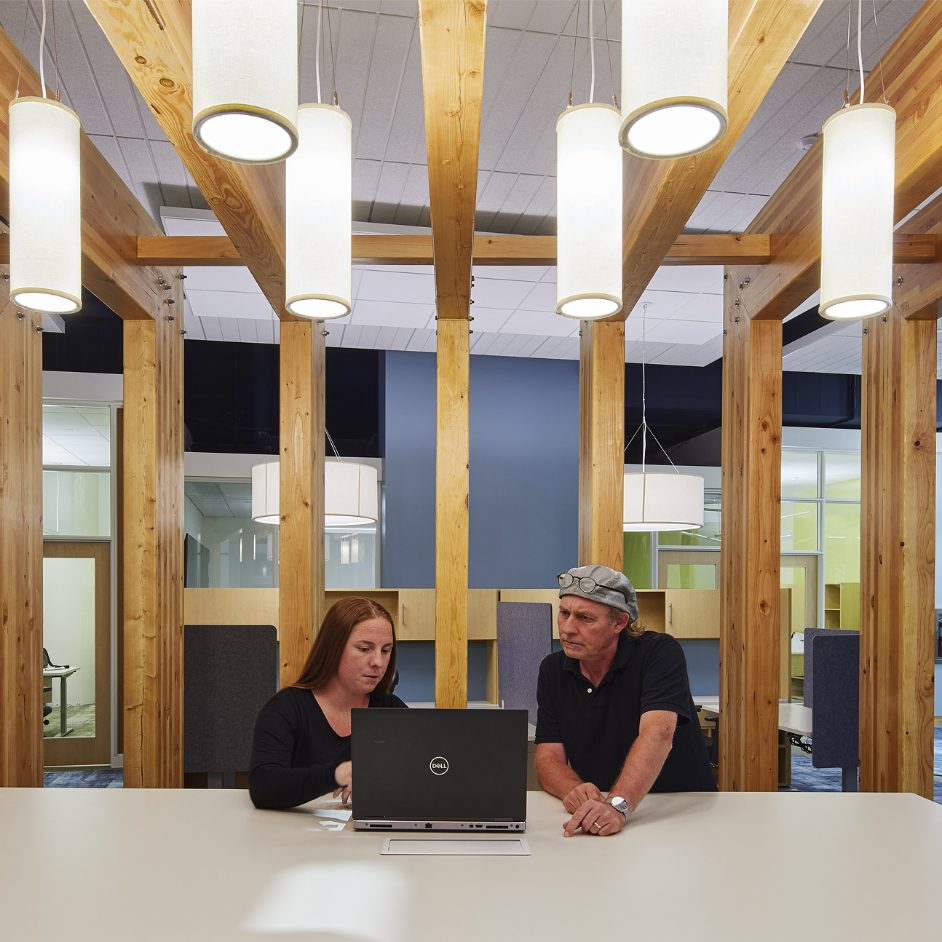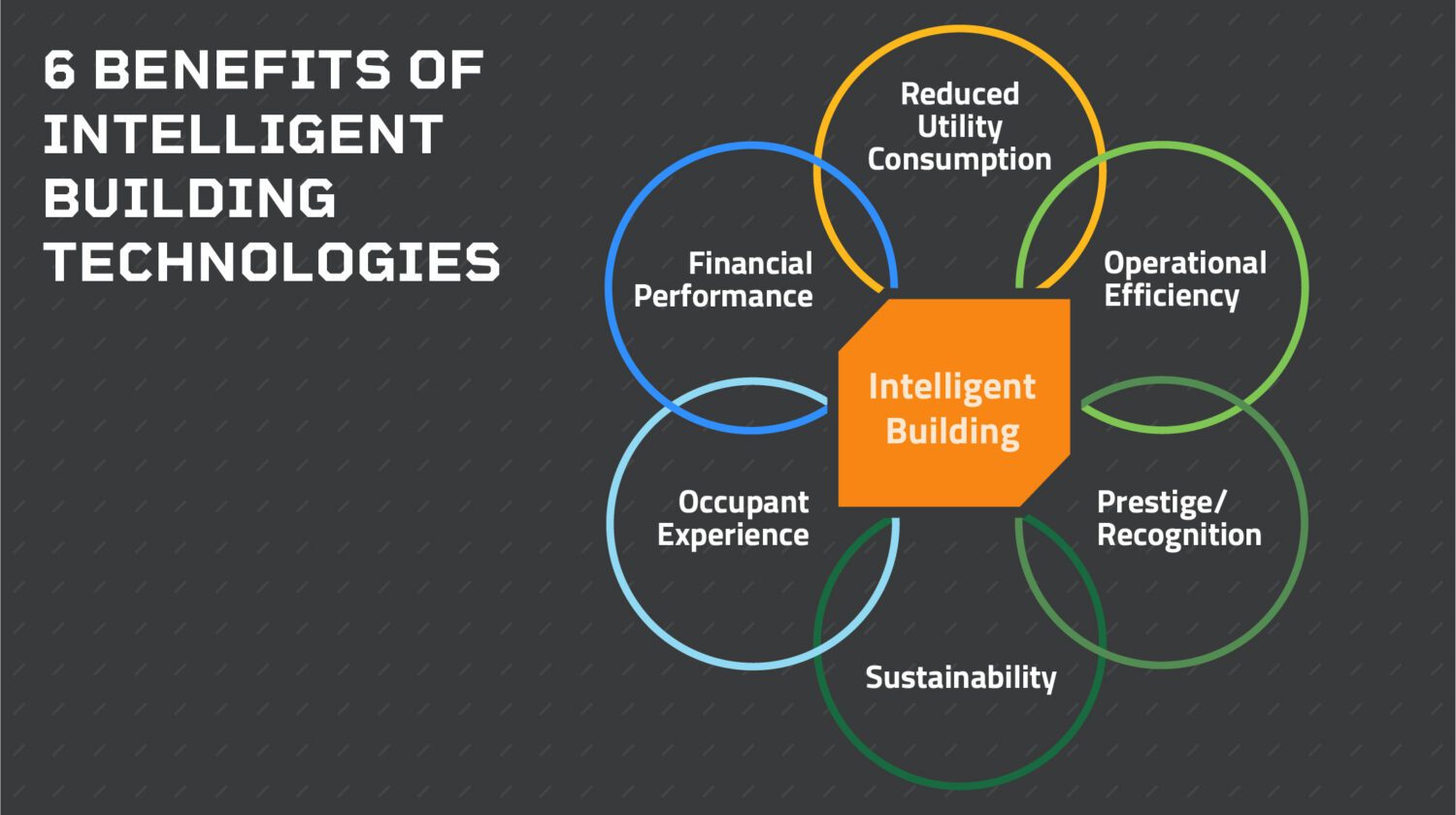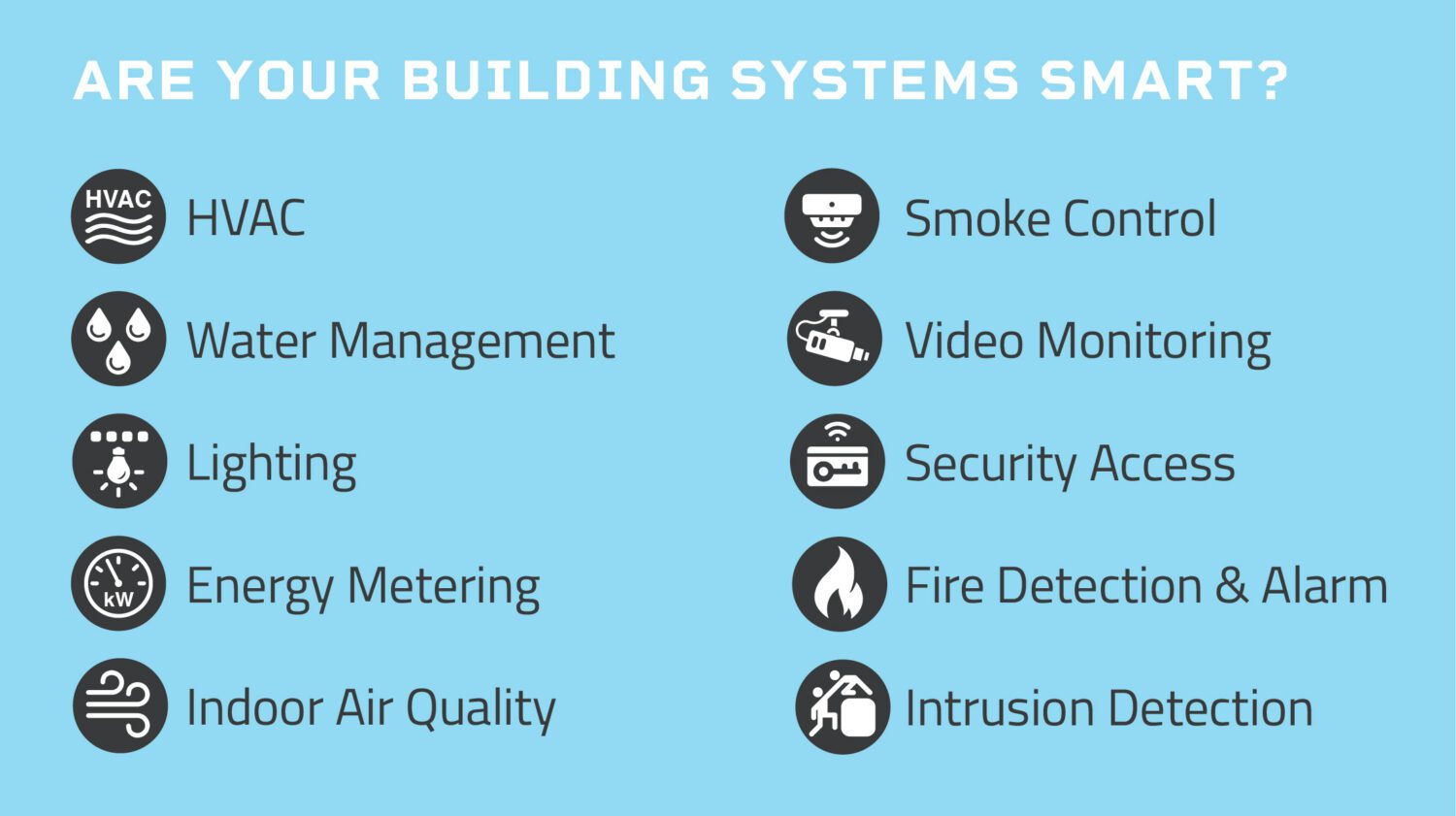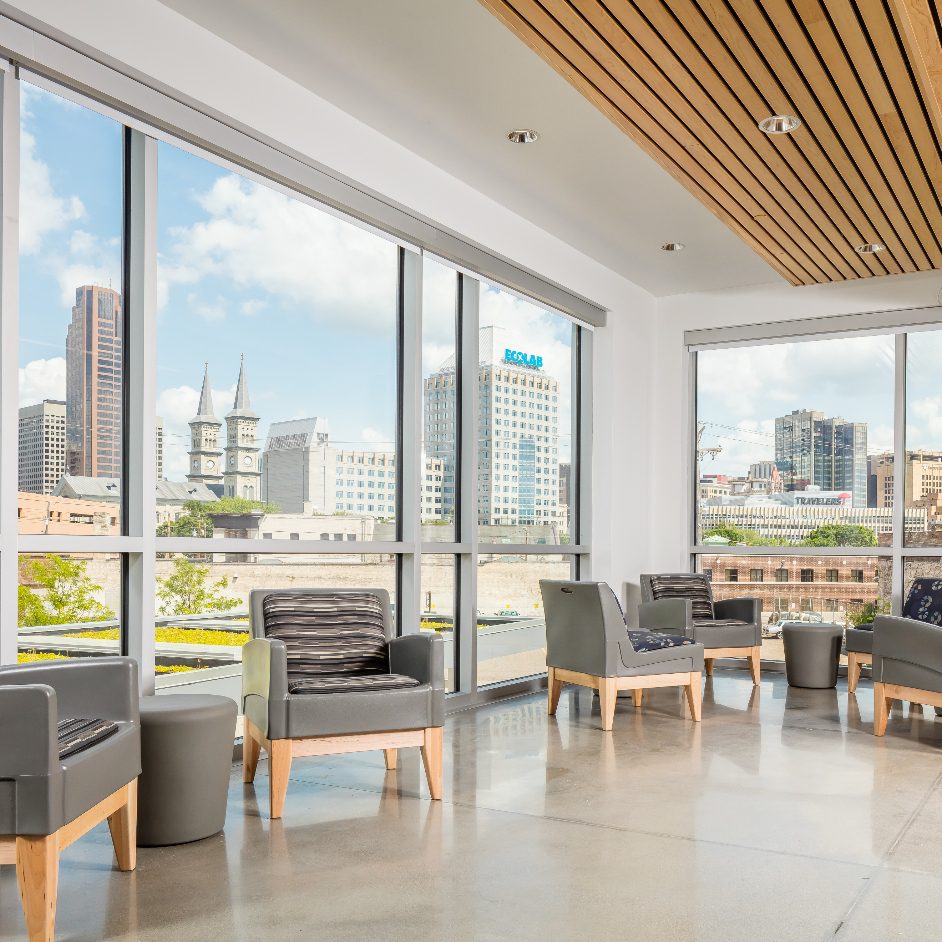
Intelligent buildings use sensors, controls, and other technologies to manage interior environments.
Examples include: building automation systems, lighting controls, and power over ethernet. In recent years, interest in intelligent building design technologies (also known as IBTs) has exploded, fueled by such trends as: the Internet of Things; advancements in artificial intelligence; and new industry standards and regulations.
The impacts of IBTs are increasingly felt across all systems within a building, from energy management and safety/security, to access control and building infrastructure management/maintenance.
Their benefits are especially attractive to commercial building owners and include:
- Lowered utility bills
- Greater occupant comfort and experience
- Improved sustainability and resiliency
- Verifiable data to support ratings and certifications and ESG reporting
- Increased financial performance through greater productivity and/or tenant occupancy
Such impacts have generated widespread enthusiasm for IBTs among investors, builders, and property managers alike. Market projections suggest that the global market for intelligent buildings will reach $570 billion by 2030 and expand at a compound annual growth rate of 25 percent from 2022 to 2030.

How IBTs boost efficiency
IBTs can be gamechangers across a wide variety of systems. They are often harnessed to optimize:
- HVAC systems
- Plug loads
- Lighting
- Window shading
- Occupant comfort
- Energy generation and power distribution
IBTs can be used, for example, to boost air quality—a high priority for many building occupants. While ventilation controls can be reset manually to improve indoor air quality, this may also increase energy costs if not recalibrated after employees have left the facility. Occupancy and CO2 sensors offer an opportunity to boost ventilation rates only when people are using the spaces.
Another example: In buildings with renewable energy systems, IBTs can tailor energy consumption to align with production curves. On a sunny but cool morning, for instance, a rooftop solar array generally produces more energy than is consumed. IBTs might be used to divert excess power to run optional loads like dishwashers, water heaters, and washing machines. If additional power remains, IBTs could channel it into battery storage or feed the energy back to the grid. The net result could be significant energy cost savings through reducing peak demand charges and increasing net metering payments. (This example is also known as a grid-interactive efficient building, a key component in the development of a flexible, resilient, and decarbonized electric system.)
The problem of “phantom loads”
It’s important not to forget, however, that IBTs themselves also have power requirements. When switches, sensors, and monitors are added to a system, total energy usage grows a bit—or a lot. This “phantom load,” as it is called, often goes unaccounted for in energy evaluations.
LHB recently partnered with the Center for Energy and the Environment to study the impact of phantom loads produced by IBTs. The findings of the three-year project—funded by the Department of Energy and a Minnesota Department of Energy Conservation Applied Research and Development grant—proved illuminating. [Add webinar link eventually.]
But you don’t have to read the whole report to understand the general conclusion: Basically, it makes a lot of sense to add controls for bigger energy users, like your HVAC system. But other elements, like lighting, have become so energy efficient in the grand scheme of things that some improvements—like adding sensors to each individual light—result in no net benefits. Overall, we need to be sure that the energy savings offered by these IBTs aren’t exceeding the energy they use during operation and in standby.

Extending the benefits
So, if adding multiple IBTs to a facility ultimately proves counterproductive or curtails overall efficiencies, should we stop using IBTs altogether? What’s the fix to this problem?
The answer, in many instances, is integration. A 2017 American Council for an Energy-Efficient Economy report found that “[w]hereas an upgrade to a single component or isolated system can result in energy savings of 5 to 15%, [an intelligent] building with integrated systems can realize 30–50% savings in existing buildings that are otherwise inefficient. Savings can reach 2.37 kWh/sq. ft.
But combining isolated IBTs, while beneficial, is not without perils.
The need for cybersecurity will become greater and greater. As these systems communicate more and more with the cloud, for example, entry points will increase not only to the building systems but any other networks that those systems communicate with. Safeguards would have to be put in place in grid-interactive efficient buildings to prevent hackers from tampering with regional power infrastructure. Remote access connections to IT, security, and HVAC services will also have to be carefully monitored.
Impact on people
Challenges aside, integrated IBTs offer huge opportunities not only for energy optimization but also improved human comfort and experience.
Hybrid work has led to different and more complex patterns of building occupancy. At LHB, for example, we’ve noticed that office occupancy and traffic levels on Mondays and Fridays are down as compared to midweek. IBTs could help us optimize energy use in buildings by adapting to real patterns of use so we aren’t lighting, cooling, or ventilating vacant spaces.
As AI improves, IBTs will grow more predictive. Occupancy sensors might predict—based on last year’s data and without manual inputs—that your HVAC system won’t need to run on the Friday after Thanksgiving when no one is in the office. Or IBTs could override that decision if occupancy sensors suddenly register unexpected activity within the space.
As designers, we also see an opportunity to use IBT data to better understand how people use spaces. If sensors indicate that a single person often uses a large conference room all day in an effort to find privacy, perhaps a different office design would better support their working style while also reducing energy use.
Ultimately, IBTs can help our buildings work smarter. The challenge for us, as designers, property managers, and building owners, is to harness them in the smartest way possible. ∎
Wondering how IBTs might transform your building? Reach out and start a conversation with LHB’s commercial studio.


